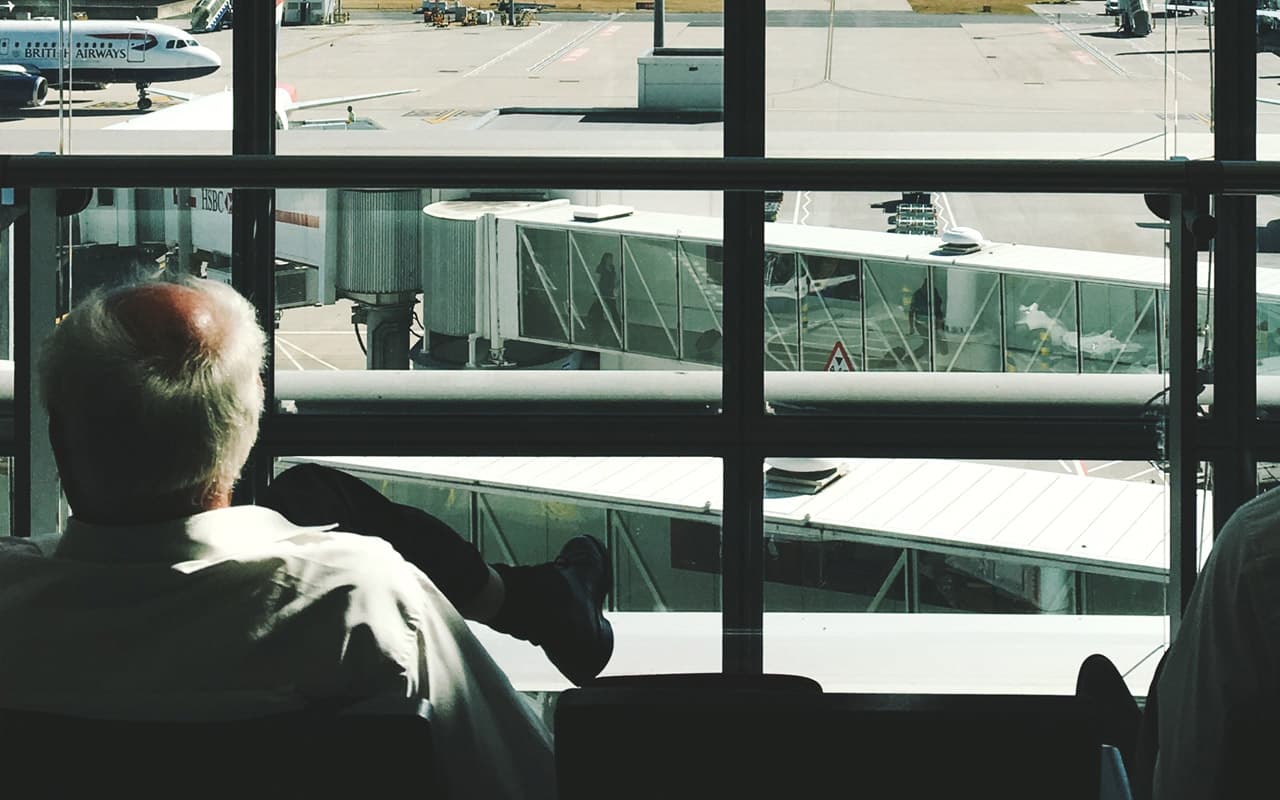Air travel has lots of upsides compared to traditional road trips. You don’t have to worry about fluctuating gas prices, there’s no chance your car will break down, and, if you get a direct flight, you can bypass pit stops entirely.
These advantages are undoubtedly appealing, but as you’ve probably heard, the summer air travel season is off to a messy start. If you’re a family caregiver preparing to fly the friendly skies, it’s crucial to plan for every possible scenario.
In this article, we highlight several suggestions for making air travel easier. You’ll find recommendations for navigating the airport, tips for reducing the risk of cancellations, and suggestions for preventing and dealing with accidents if your loved one has incontinence.
When is the best time for family caregivers to fly? Why?
You can’t always choose when a flight departs, but if given the option, it’s best to fly early in the day. Summer thunderstorms and other bad weather systems tend to form in the afternoon. Not to mention, if an early flight gets canceled, you have more time to adjust your plans.
“It also helps to book travel on days that are less popular for flights,” said Nick Mueller, Director of Operations at HawaiianIslands.com. “Avoid weekends. The airport is usually less crowded during the week, and often, weekday flights are less crowded as well.”
My loved one has mobility issues. Is there any way to get through security quicker?
Many family caregivers avoid flying because of all the challenges that security presents. If your loved one has mobility issues, activities like removing their shoes and belt take time and may even increase their risk of a slip and fall.
“I would highly recommend TSA precheck,” Mueller said. “It’s only $85, and it lasts five years, so it’s highly worth it. If you’re helping an individual who has special equipment or simply needs greater assistance getting through security, you really don’t want to get stuck in a normal line.”
TSA precheck moves significantly faster than traditional security. In fact, a survey conducted in June 2022, found that the average TSA precheck passenger waits five minutes or less.
What if my loved one uses a mobility device?
Great question! If you’re loved one uses a mobility device, like crutches, a walker, a cane, or a wheelchair, you have two options:
Option 1
Bring the assistive device with you to the airport. Before your flight, make sure to call the airline’s disability or special assistance desk. Airlines are required by law to make room for assistive devices either inside the cabin or stowed with the other checked luggage, free of charge.
Option 2
Rent a wheelchair or a walker at the airport. Not all airports and/or airlines offer this service. Therefore, it’s crucial you call in advance and schedule a reservation.
What about portable oxygen? Can my loved one bring that on a plane?
Yes. If your care recipient uses portable oxygen, it’s okay to bring it, as long as you adhere to Federal Aviation Administration (FAA) guidelines. To do that you must:
Alert the airline that you’re bringing portable oxygen at least 48 hours before your flight
Provide the airline with a medical certificate from your care recipient’s doctor
Bring a supply of fully charged batteries to power the oxygen device
Check in at least one hour before your flight’s departure time
This travel article provides additional information about the U.S. Department of Transportation’s rules and regulations regarding wheelchairs and assistive devices on planes.
What can family caregivers do to reduce incontinence-related accidents during air travel?
Now that you know a little bit more about getting through security and navigating mobility challenges, let’s talk about incontinence. While there’s no way to prevent accidents entirely, there’s plenty you can do to keep your loved one comfortable.
“Be sure to limit liquid intake before and during air travel,” said Larry Snider, Vice President of Operations at Casago Vacation Rentals.
“Changes in the cabin’s pressure and/or tight seatbelts may put extra pressure on the bladder. You don’t have to avoid in-flight drinks entirely, but it’s best to avoid diuretics, like coffee and tea. It’s also a good idea to notify a flight attendant of your loved one’s urinary incontinence before takeoff. They might be able to move you closer to the aisle, or assist in the event of a long delay.”
In addition, Quiara Smith, MOT, OTR/L, a holistic and integrative pediatric pelvic health occupational therapist, and the owner of Aloha Integrative Therapy, recommends bringing a portable, folding toilet seat insert and/or stool.
“The Squatty Potty portable foldable footstool provides essential support for a person’s legs, allowing them to completely empty their bladder and rectum. When your feet dangle while seated on a public toilet, or any toilet for that matter, they aren’t in the optimal position for voiding.” If your care recipient is sensitive to noises, Smith also recommends “placing a post-it note on the sensor of automatic flush toilets, to prevent startling them with an unexpected loud flush.”
To combat accidents that might occur while flying, pack a carry-on bag that contains incontinence products, such as diapers, pull-ups, underpads, and skin barrier cream. These items can help keep your care recipient’s skin clean and dry while preventing odors, rashes, and irritation.
What else should I consider in terms of air travel?
When traveling by plane, another important factor to consider is your care recipient’s general health. Spending long hours sitting or standing around is exhausting. If your loved one has diabetes or another chronic medical condition, they might experience huge fluctuations in their energy levels and mood.
Make sure you have access to a purse, backpack, or fanny pack that contains all of their prescription medications, vitamins, and supplements. It’s also a good idea to pack a first-aid kit, some healthy snacks, and plenty of water. That way, you’re prepared for anything, including lengthy delays.
May all of your upcoming flights be safe and hassle-free
Air travel offers many upsides, but it can also present unique challenges for family caregivers and their loved ones. Fortunately, with a bit of research and planning, you can prepare for all of the potential variables.
Are you an experienced family caregiver who also frequently travels by air? Is there a tip or suggestion that didn’t make our list? If so, we’d love to hear from you. Please visit our Facebook page and share your air travel tips. We’re always striving to make our content better!
Related reading:
Carewell’s Ultimate Packing Checklist for Caregivers



